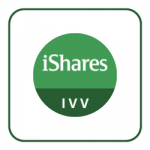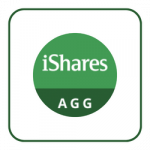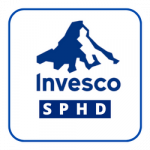This content represents the writer’s opinions and research and is not intended to be taken as financial advice. The information presented is general in nature and may not meet the specific needs of any individual or entity. It is not intended to be relied upon as a professional or financial decision-making tool.
iShares Core High Dividend ETF (HDV) is an exchange-traded fund created in March 2011 and managed by Black Rock. It is a basket of about 75 high-quality large-cap US stocks that are well-establish businesses, offering dividend payments to its investors. It is structured for investors who look for long-term income investing rather than those who are searching for short-term capital appreciation. The HDV ETF tracks an index of US high dividend-paying stocks based on the Morningstar Dividend Yield Focus Index. Companies that are included in the index have to pay relatively high dividends compared with their peers and the dividend payments need to be sustainable and regular in nature.
Therefore, the fund is assumed to be relatively passively managed, but on top of that, the HDV has a mandate of at least 80% investment in the asset of its Morningstar benchmark which means that it can deviate by 20% to other types of investments or overweight/underweight certain stocks in the basket to allow directional views. The top sectors that HDV has exposure to are Energy, Healthcare, Technology and Communication Services to name a few.
iShares Core High Dividend ETF has a relatively low expense ratio of 0.08% compared to the industry average of 0.2-0.4% for ETFs. The dividend yield of the HDM was around 3.57% per year (without adjustments to inflation or taxes) and the fund pays a dividend on a quarterly basis. The current net assets of the iShares Core High Dividend ETF are around USD 13 billion.
Table of Contents
Characteristics, Performance Analysis, and Expectations
The most recent net asset value (NAV) of the HDV is around USD 107 per share with the year-to-date performance of 1.8% vs the S&P500 index of 1.8% which attributes the performance of the fund mostly to the overall market rebound in early 2023.
If we compare the historical performance of the iShares Core High Dividend ETF vs S&P500 for the year 2022 we see a +4.3% return for HDV vs -20% plunge in S&P500 for the year. This is an indication that the overall market turmoil due to inflation, recession worries and central bank rate hikes are not having a dramatic impact on the dividend-paying stocks mostly thanks to the additional income that the stocks generate and are less dependent on the capital appreciation.
The aspect of being less volatile than the overall market is visible also in the 3-year Beta factor of the iShares Core High Dividend ETF which is at 0.86 level against the S&P500 as of the end of November. Beta indicates how much volatility the ETF has against a market benchmark – 1 indicates the same volatility, less than 1 is less volatile than the market and more than 1 is more volatile.
Assuming that we are in a transition from high inflation to a gradual reduction in the consumer price index (CPI) levels and hence less aggressive hikes from the central banks we can expect a better performance for 2023. Nonetheless, it is worth noting that inflation is still higher than the target inflation rate of around 2% set by most of the central banks, thus we can still expect some rate hikes in 2023 to bring the CPI levels close to the target rates.
The historical performance is not an indicator of future performance, but as the iShares Core High Dividend ETF behaved in a less volatile manner in an inflationary and rate hikes environment, similar to less magnitude should be expected for 2023 in terms of the economic impact assuming the above-mentioned scenario of reducing inflation and less aggressive rate hikes ceteris paribus. Thus, we should expect a less volatile year compared to the overall market for iShares Core High Dividend ETF thanks to the dividend incomes of the fund.
An additional characteristic of the HDV is that the fund is a market capitalization-weighted which means that the weights of the constituent stocks in the basket are adjusted based on the company market cap, hence most of the companies included in the ETF are large and well-established US companies that pay high dividends.
Depending on the country of your residence you should check with your banking service provider for a brokerage account and whether they offer iShares Core High Dividend ETF as a possible instrument to invest in. Otherwise, you can also check with some of the large online brokerages such as eToro which offers HDV to its investors.
Before making any investment in financial markets you should do your due diligence to identify whether the investment is appropriate for you and meets your goals or preferences. One of the factors to be checked is the current holding of the iShares Core High Dividend ETF. Below are the top 5 current holdings and their respective portfolio weights in HDV:
- Exxon Mobil Corp – 9.1%
- Verizon Communications Inc – 7%
- Chevron Corp – 5.9%
- Abbvie Inc – 5.6%
- Pfizer Inc – 5.1%
You should check the total allocation both from the industry perspective as well as the single stock name perspective to understand whether it meets your specific preferences and circumstances such as for example economic social and governance (ESG) criteria if that is something of your interest.
In general, iShares Core High Dividend ETF is designed for passive investors who are looking for dividend income and are ready for a longer-term holding period to gain some value from including the HDV in their portfolios.
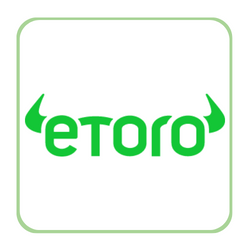
A reputable online broker with a wide range of options for both beginner and professional traders, eToro simplifies the process of buying and selling stocks, including HDV.
In this mini guide, we will walk you through the process of opening an account on eToro and investing in iShares Core High Dividend ETF (HDV).
Step 1: Open your Personal Account
To begin, navigate to eToro’s homepage and click on the “Sign Up” or “Join Now” button. This will take you to the registration page, where you will need to provide your name, email address, username, and password. After you’ve submitted the required information, eToro will send you a confirmation email. Click the link in the email to verify your account.
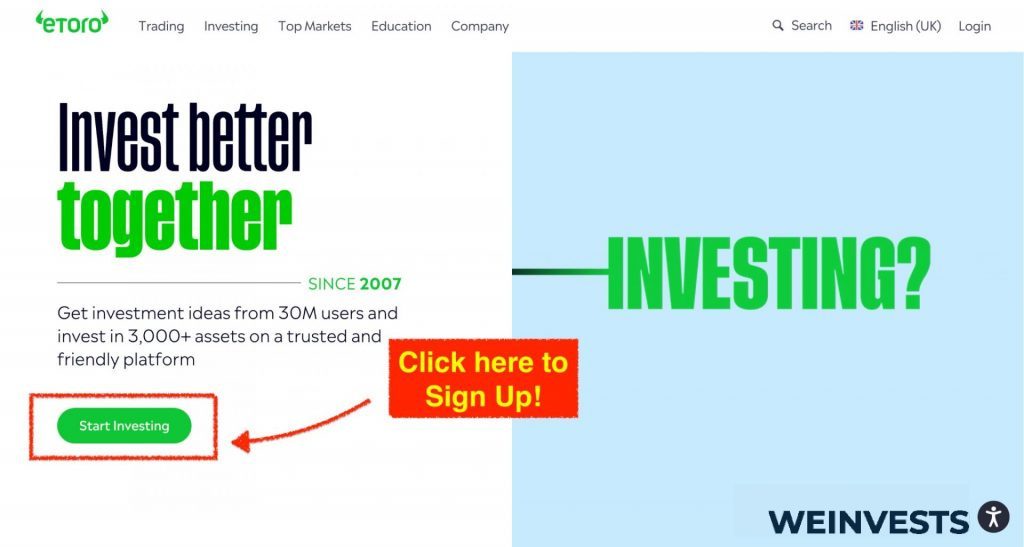
Step 2: Upload ID
Once your account is verified, you’ll need to provide proof of identity. This can be done by uploading a scanned copy of your ID or passport. The eToro platform has a designated area for uploading these documents.
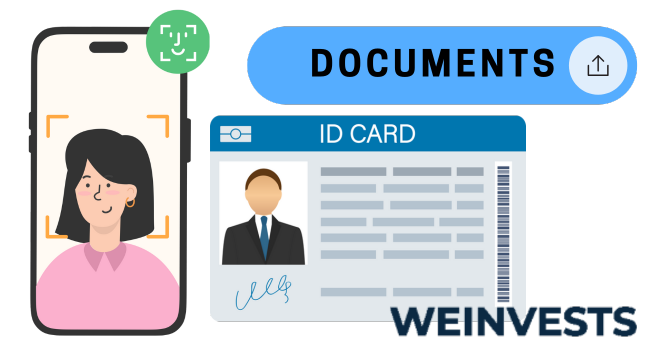
Step 3: Make a Deposit
After verifying your identity, it’s time to fund your account. eToro offers a variety of deposit options, including credit cards, PayPal, and wire transfers. To make a deposit, click on the “Deposit Funds” button on the platform and select your preferred method.
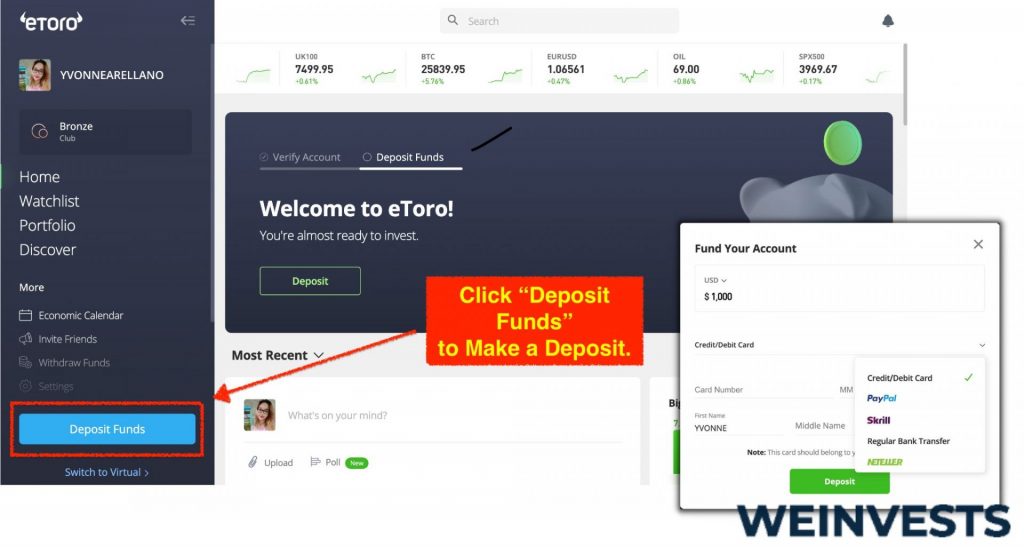
Step 4: Search HDV
Now that your account is funded, you can search for iShares Core High Dividend ETF (HDV) on the eToro platform. Use the main search bar at the top of the page and type in “HDV” or “iShares Core High Dividend ETF.” The search results will display the HDV.
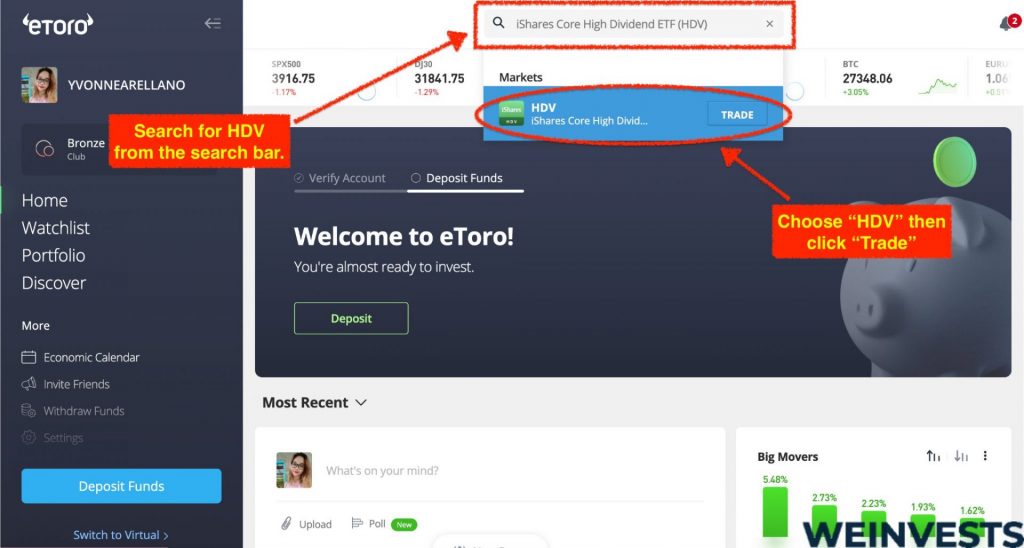
To purchase iShares Core High Dividend ETF (HDV), click on the HDV in the search results. This will open the ETF’s trading page. Here, you can view relevant information, such as the ETF’s performance and market data. To buy HDV, click on the “Trade” button, enter the amount you’d like to invest, and finalize the transaction.
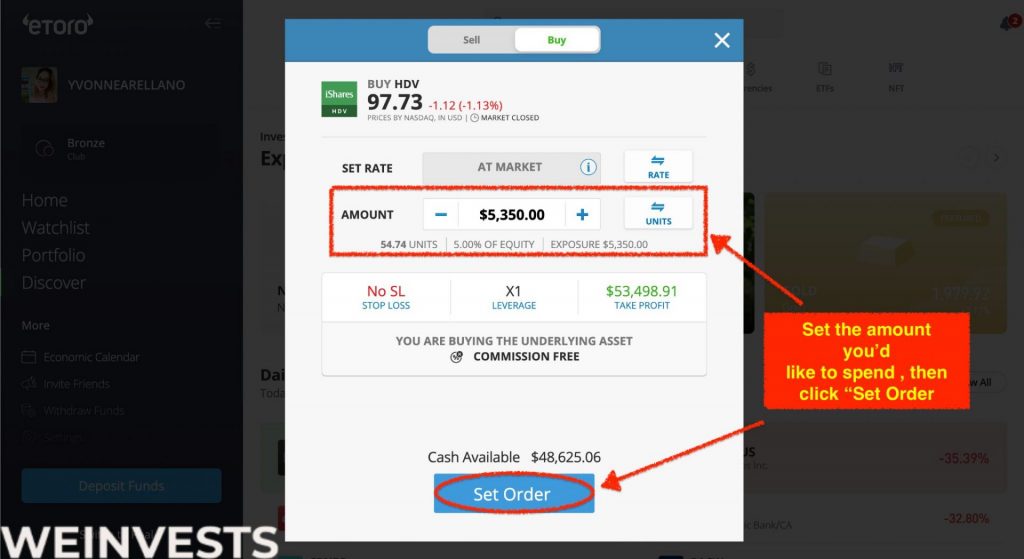
Market Risk
Any changes to market factors that are linked to iShares Core High Dividend ETF may negatively affect the value of the ETF. Such market factors are stock prices of the companies in the basket which may drop due to different reasons both macro and micro-based, interest rate changes which affect overall market valuation, risk of some companies not paying dividends, to name a few.
Macroeconomic and geopolitical circumstances may also have a direct or indirect impact on the value of HDV such as global disruptions due to wars or energy crises in some western countries.
Any investment in the stock market is associated with some market risk. The risk factors might be different for each financial instrument and it is worth doing thorough research to understand what factors can negatively impact the financial instrument that you are investing in.
Credit Risk
Credit risk is usually associated with the investment in fixed-income securities as well as derivatives where there is a risk of the counterparty not being able to meet the payment obligations. As such ETF and stock investments are associated with theoretically low to no credit risk exposure.
Although the companies are large in market capitalization and the default risk of the basket companies is relatively low there is still some level of credit risk that can be monitored. The risk is associated with the firms that are in the basket of iShares Core High Dividend ETF not being able to pay on their debts and thus defaulting as such causing the ETF value to drop significantly. Although it is an indirect risk to the ETF investors the default or bankruptcy risk can always cause losses to HDV investors so it needs to be monitored as well.
Liquidity Risk
Large-cap stocks, as well as ETFs holding such stocks, are usually assumed to be liquid investments which means that you can convert your holdings into cash relatively quickly and without major market impact.
Good indicators are the daily volume and 30-day average volume information which provide some understanding of the liquidity of the stock. This indicates that for the most recent trading day, there were about 1 million shares traded and the 30-day average stands around 1.2 million which means that on average there are more than 1 million shares traded per day in the market, thus making it a highly liquid investment.
Valuation Risk
Although the valuation risk is relatively low given the fact that HDV is an exchange-traded fund which means that the market demand and supply determines the price of the fund, there is still some risk of the market incorrectly reacting to certain stocks in the basket of the ETF based on some news related to earnings, dividends or interest rate changes which will negatively affect the valuation of the iShares Core High Dividend ETF.
Conclusion
iShares Core High Dividend ETF is a basket of high dividend-paying US stocks that are large-cap, well-established businesses with sound financial health and sustainable dividend payments. The HDV ETF is not meant for investors who look for short-term capital appreciations since the fund invests in large-cap value companies with a focus on dividend income.
As with any other investment, there are certain risks associated with iShares Core High Dividend ETF as well such as market risk and relatively smaller but still worth consideration of credit, liquidity, and valuation risks.
As usual, it is always recommended to perform a thorough analysis before investing to identify whether the investment is appropriate for you given your risk tolerance, capacity, and personal or professional circumstances as well as other factors such as ESG constraints.
FAQs
iShares Core High Dividend ETF invests mostly in large capitalization value stocks which are stable and large dividend-paying companies that are relatively less volatile in different market circumstances. In addition, the dividends received by investors helped the fund to perform better than the market since most of the investors should have been looking to allocate their money to stable income-generating stocks in the midst of the market turmoil.
There are a number of factors that can impact the price of the HDV which are mostly related to market risk factors with some lower risk of credit, liquidity, and valuation factors. If it comes to the main risk from the market standpoint those are the risk of underlying stock prices declining due to different economic or company-specific circumstances, dividends being cut from some of the companies, or interest rate hikes which might lower the valuation of the companies involved in the ETF and hence cause the reduction in the ETF value.
WeInvests is a financial portal-based research agency. We do our utmost best to offer reliable and unbiased information about crypto, finance, trading and stocks. However, we do not offer financial advice and users should always carry out their own research.
Read More




